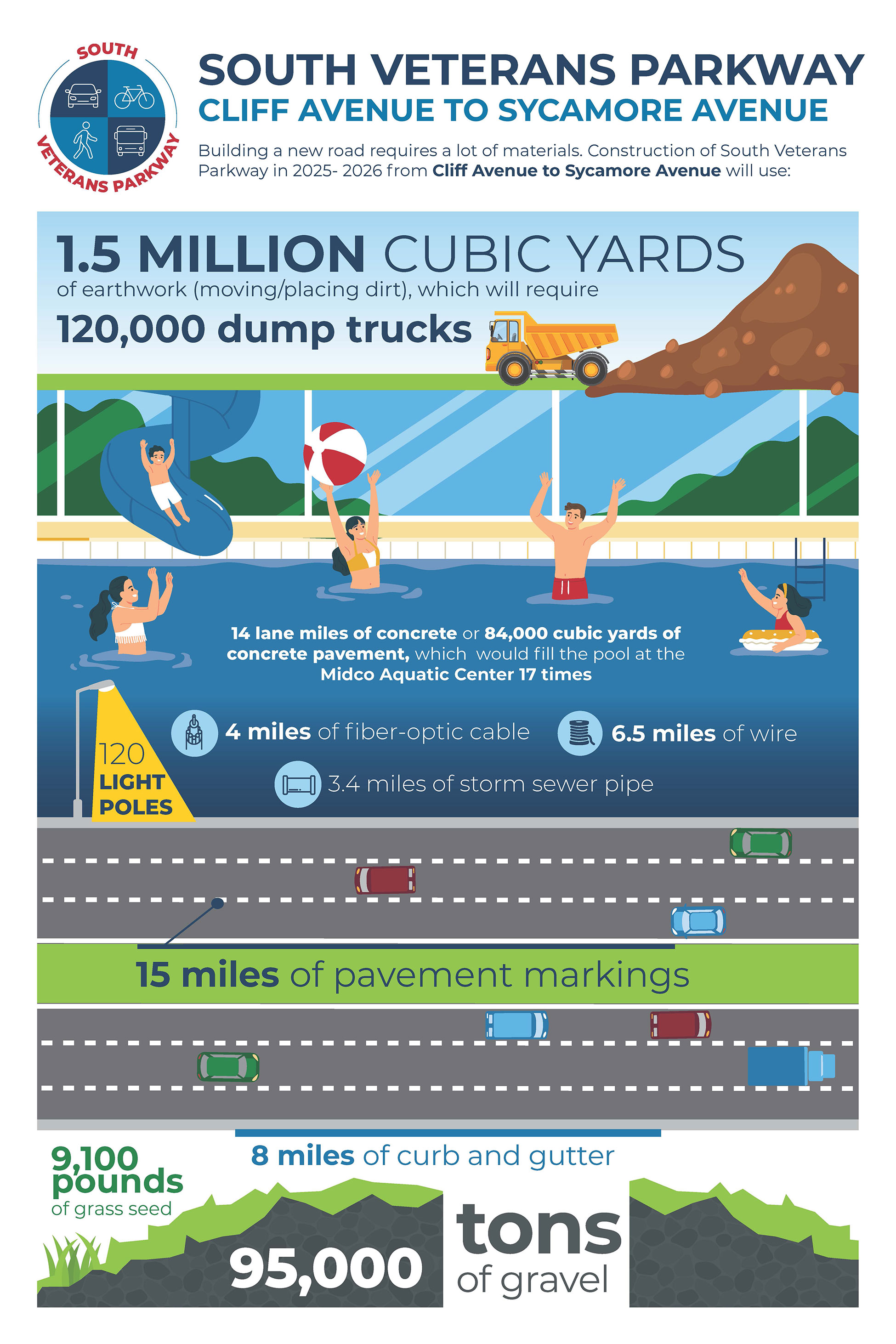South Veterans Parkway Construction Details
Through the winter, work on the bridge over the railroad tracks will continue, and all other construction is paused until spring.
The first segment from Western Avenue to Cliff Avenue was completed and opened to traffic in November 2024. Construction on the next segment from Cliff Avenue to Sycamore Avenue will begin in spring 2025. The remaining segments will continue to be designed and constructed through 2027.

- April 2025 - Construction Begins
- Spring to Fall 2025 - Dirt Work, Storm Sewer, and on South Veterans Parkway and Southeastern Avenue; Paving on Southeastern Avenue
- Spring to Fall 2026 - Dirt Work and Utilities on Sycamore Avenue; Paving on South Veterans and Sycamore Avenue
- Weather and Schedule Permitting
Dirt Work
Construction projects like South Veterans Parkway are designed to be as efficient and cost-effective as possible, including excavating dirt and other materials for the road bed in areas close to the project site.
-
Save time
Hauling trucks travel shorter distances, saving time and money while minimizing impacts to the traveling public and environment.
-
Manage water
Excavated areas also serve as future detention ponds, which mitigate potential impacts to downslope properties by holding storm water runoff and releasing it at a slower rate.
-
Reduce cost
There are cost savings from purchasing land for excavation near the project area rather than relying on more expensive excavation areas further away.









